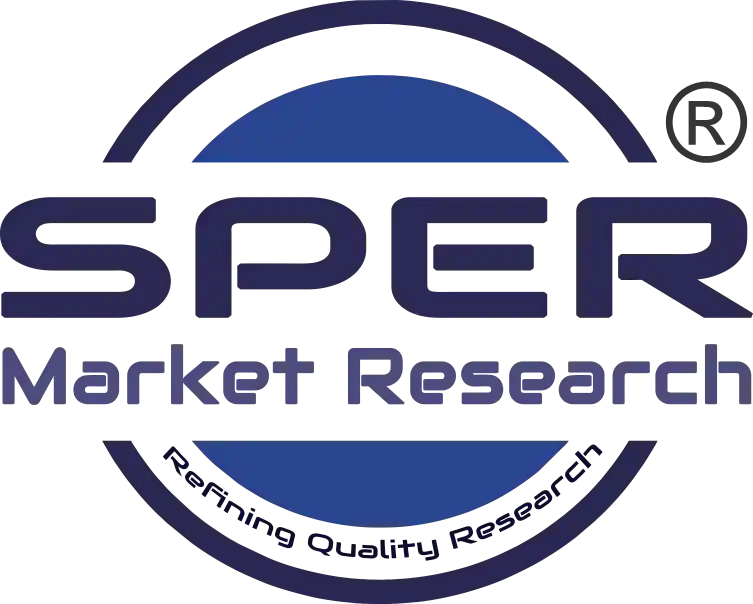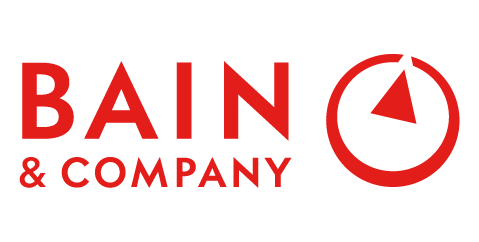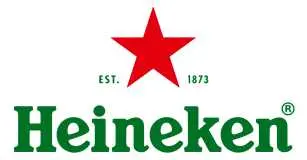
Global Automotive Fluid Market Insights, Size & Growth Forecast To 2027
Global Automotive Fluid Market- By fluid type (Engine oil, Radiator Fluid, Transmission Fluid, Power Steering Fluid, Brake Fluid, Air Conditioning Coolant/Refrigerants, Washer Fluid, Others (Oil Additives, Etc.), By Vehicle Type (Passenger Vehicle, Commercial Vehicle, Buses, Off road vehicles, two wheelers), By sales Channel (OEM, Aftermarket), and By Region (North America, Europe, Asia Pacific, South America, Middle East, & Africa)- Global forecast from 2020-2027.
| Published: Mar-2021 | Report ID: AMIN2104 | Pages: 1 - 250 | Formats*: |
| Category : Automotive & Transportation | |||
1.1. Market Modelling1.2. Product Analysis1.3. Market Trend and Economic Factors Analysis1.4. Market Segmental Analysis1.5. Geographical Mapping1.6. Country Wise Segregation
2.1. Identification of Target Market2.2. Data Acquisition2.3. Refining of Data/ Data Transformations2.4. Data Validation through Primary Techniques2.5. Exploratory Data Analysis2.6. Graphical Techniques/Analysis2.7. Quantitative Techniques/Analysis2.8. Visual Result/Presentation
4.1. Supply Chain Analysis4.2. Economic Factor Analysis4.2.1. Drivers4.2.2. Trends4.2.3. Opportunities4.2.4. Challenges4.3. Technological Landscape4.4. Competitors & Product Analysis4.5. Regulatory Framework4.6. Company market share analysis, 20194.7. Porter’s Five forces analysis4.8. New Investment Analysis4.9. PESTEL Analysis
5.1. Market Size & Forecast, 2016-20275.1.1. Demand5.1.1.1. By Value (USD Million)5.1.2. Consumption5.1.2.1. By Volume (Liters)5.2. Market Share & Forecast, 2016-20275.2.1. By Fluid Type5.2.1.1. Engine Oil5.2.1.1.1. Mineral Oil5.2.1.1.2. Synthetic oils5.2.1.1.3. Semi-synthetic oils5.2.1.1.4. High-mileage oil5.2.1.2. Radiator Fluid5.2.1.2.1. Inorganic Additive Technology (IAT)5.2.1.2.2. Organic Acid Technology (OAT)5.2.1.2.3. Hybrid Organic Acid Technology (HOAT)5.2.1.3. Transmission Fluid5.2.1.3.1. Multi-Vehicle Synthetic Transmission Fluid5.2.1.3.2. Continuously Variable Transmission (CVT) Fluid5.2.1.3.3. Automatic Transmission Fluids (ATF)5.2.1.4. Power Steering Fluid5.2.1.4.1. Hydraulic Power Steering Fluid5.2.1.4.2. Electronic Power Steering (EPS)5.2.1.5. Brake Fluid5.2.1.5.1. DOT3(glycol-based fluids)5.2.1.5.2. DOT4(glycol-based fluids)5.2.1.5.3. DOT5(silicon-based)5.2.1.6. Air Conditioning Coolant/Refrigerants5.2.1.7. Washer Fluid5.2.1.8. Others (Oil Additives, Etc.)5.2.2. By Vehicle Type5.2.2.1. Passenger Vehicle5.2.2.1.1. Hatch Back5.2.2.1.2. Sedan Cars5.2.2.1.3. LUV5.2.2.1.4. SUV5.2.2.2. Commercial Vehicle5.2.2.2.1. Light Commercial Vehicle5.2.2.2.2. Heavy Commercial Vehicle5.2.2.3. Buses5.2.2.3.1. Single Decker5.2.2.3.2. Double Decker5.2.2.4. Off Road Vehicles5.2.2.4.1. Agricultural Vehicle5.2.2.4.2. Construction Vehicle5.2.2.5. Two-Whelers5.2.3. By Sales Channel5.2.3.1. OEM5.2.3.2. Aftermarket5.2.4. By Region5.2.4.1. North America5.2.4.2. Europe5.2.4.3. Asia Pacific5.2.4.4. South America5.2.4.5. Middle East & Africa
6.1. North America Automotive Fluid Market Size & Forecast, 2016-20276.1.1. Demand6.1.1.1. By Value (USD Million)6.1.2. Consumption6.1.2.1. By Volume (Liters)6.2. North America Automotive Fluid Market Share & Forecast, 2016-20276.2.1. By Fluid Type6.2.1.1. Engine Oil6.2.1.1.1. Mineral Oil6.2.1.1.2. Synthetic oils6.2.1.1.3. Semi-synthetic oils6.2.1.1.4. High-mileage oil6.2.1.2. Radiator Fluid6.2.1.2.1. Inorganic Additive Technology (IAT)6.2.1.2.2. Organic Acid Technology (OAT)6.2.1.2.3. Hybrid Organic Acid Technology (HOAT)6.2.1.3. Transmission Fluid6.2.1.3.1. Multi-Vehicle Synthetic Transmission Fluid6.2.1.3.2. Continuously Variable Transmission (CVT) Fluid6.2.1.3.3. Automatic Transmission Fluids (ATF)6.2.1.4. Power Steering Fluid6.2.1.4.1. Hydraulic Power Steering Fluid6.2.1.4.2. Electronic Power Steering (EPS)6.2.1.5. Brake Fluid6.2.1.5.1. DOT3(glycol-based fluids)6.2.1.5.2. DOT4(glycol-based fluids)6.2.1.5.3. DOT5(silicon-based)6.2.1.6. Air Conditioning Coolant/Refrigerants6.2.1.7. Washer Fluid6.2.1.8. Others (Oil Additives, Etc.)6.2.2. By Vehicle Type6.2.2.1. Passenger Vehicle6.2.2.1.1. Hatch Back6.2.2.1.2. Sedan Cars6.2.2.1.3. LUV6.2.2.1.4. SUV6.2.2.2. Commercial Vehicle6.2.2.2.1. Light Commercial Vehicle6.2.2.2.2. Heavy Commercial Vehicle6.2.2.3. Buses6.2.2.3.1. Single Decker6.2.2.3.2. Double Decker6.2.2.4. Off Road Vehicles6.2.2.4.1. Agricultural Vehicle6.2.2.4.2. Construction Vehicle6.2.2.5. Two-Whelers6.2.3. By Sales Channel6.2.3.1. OEM6.2.3.2. Aftermarket6.2.4. By Country6.2.4.1. US6.2.4.2. Canada6.2.4.3. Mexico6.2.5. Price-Point Analysis6.2.6. Manufacturer & Distributor List (Top 5)6.2.7. Company Market Share (Top 3-5)6.2.8. Economic Impact Study on North America Automotive Fluid Market
7.1. Europe Automotive Fluid Market Size & Forecast, 2016-20277.1.1. Demand7.1.1.1. By Value (USD Million)7.1.2. Consumption7.1.2.1. By Volume (Thousands Unit)7.1.3. Supply/Production7.1.3.1. By Volume (Thousands Unit)7.2. Europe Automotive Fluid Market Share & Forecast, 2016-20277.2.1. By Fluid Type7.2.1.1. Engine Oil7.2.1.1.1. Mineral Oil7.2.1.1.2. Synthetic oils7.2.1.1.3. Semi-synthetic oils7.2.1.1.4. High-mileage oil7.2.1.2. Radiator Fluid7.2.1.2.1. Inorganic Additive Technology (IAT)7.2.1.2.2. Organic Acid Technology (OAT)7.2.1.2.3. Hybrid Organic Acid Technology (HOAT)7.2.1.3. Transmission Fluid7.2.1.3.1. Multi-Vehicle Synthetic Transmission Fluid7.2.1.3.2. Continuously Variable Transmission (CVT) Fluid7.2.1.3.3. Automatic Transmission Fluids (ATF)7.2.1.4. Power Steering Fluid7.2.1.4.1. Hydraulic Power Steering Fluid7.2.1.4.2. Electronic Power Steering (EPS)7.2.1.5. Brake Fluid7.2.1.5.1. DOT3(glycol-based fluids)7.2.1.5.2. DOT4(glycol-based fluids)7.2.1.5.3. DOT5(silicon-based)7.2.1.6. Air Conditioning Coolant/Refrigerants7.2.1.7. Washer Fluid7.2.1.8. Others (Oil Additives, Etc.)7.2.2. By Vehicle Type7.2.2.1. Passenger Vehicle7.2.2.1.1. Hatch Back7.2.2.1.2. Sedan Cars7.2.2.1.3. LUV7.2.2.1.4. SUV7.2.2.2. Commercial Vehicle7.2.2.2.1. Light Commercial Vehicle7.2.2.2.2. Heavy Commercial Vehicle7.2.2.3. Buses7.2.2.3.1. Single Decker7.2.2.3.2. Double Decker7.2.2.4. Off Road Vehicles7.2.2.4.1. Agricultural Vehicle7.2.2.4.2. Construction Vehicle7.2.2.5. Two-Whelers7.2.3. By Sales Channel7.2.3.1. OEM7.2.3.2. Aftermarket7.2.4. By Country7.2.4.1. Germany7.2.4.2. UK7.2.4.3. France7.2.4.4. Italy7.2.4.5. Rest of Europe7.2.5. Price-Point Analysis7.2.6. Manufacturer & Distributor List (Top 5)7.2.7. Company Market Share (Top 3-5)7.2.8. Economic Impact Study on Europe Automotive Fluid Market
8.1. Asia Pacific Automotive Fluid Market Size & Forecast, 2016-20278.1.1. Demand8.1.1.1. By Value (USD Million)8.1.2. Consumption8.1.2.1. By Volume (Liters)8.2. Asia Pacific Automotive Fluid Market Share & Forecast, 2016-20278.2.1. By Fluid Type8.2.1.1. Engine Oil8.2.1.1.1. Mineral Oil8.2.1.1.2. Synthetic oils8.2.1.1.3. Semi-synthetic oils8.2.1.1.4. High-mileage oil8.2.1.2. Radiator Fluid8.2.1.2.1. Inorganic Additive Technology (IAT)8.2.1.2.2. Organic Acid Technology (OAT)8.2.1.2.3. Hybrid Organic Acid Technology (HOAT)8.2.1.3. Transmission Fluid8.2.1.3.1. Multi-Vehicle Synthetic Transmission Fluid8.2.1.3.2. Continuously Variable Transmission (CVT) Fluid8.2.1.3.3. Automatic Transmission Fluids (ATF)8.2.1.4. Power Steering Fluid8.2.1.4.1. Hydraulic Power Steering Fluid8.2.1.4.2. Electronic Power Steering (EPS)8.2.1.5. Brake Fluid8.2.1.5.1. DOT3(glycol-based fluids)8.2.1.5.2. DOT4(glycol-based fluids)8.2.1.5.3. DOT5(silicon-based)8.2.1.6. Air Conditioning Coolant/Refrigerants8.2.1.7. Washer Fluid8.2.1.8. Others (Oil Additives, Etc.)8.2.2. By Vehicle Type8.2.2.1. Passenger Vehicle8.2.2.1.1. Hatch Back8.2.2.1.2. Sedan Cars8.2.2.1.3. LUV8.2.2.1.4. SUV8.2.2.2. Commercial Vehicle8.2.2.2.1. Light Commercial Vehicle8.2.2.2.2. Heavy Commercial Vehicle8.2.2.3. Buses8.2.2.3.1. Single Decker8.2.2.3.2. Double Decker8.2.2.4. Off Road Vehicles8.2.2.4.1. Agricultural Vehicle8.2.2.4.2. Construction Vehicle8.2.2.5. Two-Whelers8.2.3. By Sales Channel8.2.3.1. OEM8.2.3.2. Aftermarket8.2.4. By Country8.2.4.1. China8.2.4.2. India8.2.4.3. Japan8.2.4.4. Australia8.2.4.5. Rest of Asia Pacific8.2.5. Price-Point Analysis8.2.6. Manufacturer & Distributor List (Top 5)8.2.7. Company Market Share (Top 3-5)8.2.8. Economic Impact Study on Asia Pacific Automotive Fluid Market
9.1. South America Automotive Fluid Market Size & Forecast, 2016-20279.1.1. Demand9.1.1.1. By Value (USD Million)9.1.2. Consumption9.1.2.1. By Volume (Liters)9.2. South America Automotive Fluid Market Share & Forecast, 2016-20279.2.1. By Fluid Type9.2.1.1. Engine Oil9.2.1.1.1. Mineral Oil9.2.1.1.2. Synthetic oils9.2.1.1.3. Semi-synthetic oils9.2.1.1.4. High-mileage oil9.2.1.2. Radiator Fluid9.2.1.2.1. Inorganic Additive Technology (IAT)9.2.1.2.2. Organic Acid Technology (OAT)9.2.1.2.3. Hybrid Organic Acid Technology (HOAT)9.2.1.3. Transmission Fluid9.2.1.3.1. Multi-Vehicle Synthetic Transmission Fluid9.2.1.3.2. Continuously Variable Transmission (CVT) Fluid9.2.1.3.3. Automatic Transmission Fluids (ATF)9.2.1.4. Power Steering Fluid9.2.1.4.1. Hydraulic Power Steering Fluid9.2.1.4.2. Electronic Power Steering (EPS)9.2.1.5. Brake Fluid9.2.1.5.1. DOT3(glycol-based fluids)9.2.1.5.2. DOT4(glycol-based fluids)9.2.1.5.3. DOT5(silicon-based)9.2.1.6. Air Conditioning Coolant/Refrigerants9.2.1.7. Washer Fluid9.2.1.8. Others (Oil Additives, Etc.)9.2.2. By Vehicle Type9.2.2.1. Passenger Vehicle9.2.2.1.1. Hatch Back9.2.2.1.2. Sedan Cars9.2.2.1.3. LUV9.2.2.1.4. SUV9.2.2.2. Commercial Vehicle9.2.2.2.1. Light Commercial Vehicle9.2.2.2.2. Heavy Commercial Vehicle9.2.2.3. Buses9.2.2.3.1. Single Decker9.2.2.3.2. Double Decker9.2.2.4. Off Road Vehicles9.2.2.4.1. Agricultural Vehicle9.2.2.4.2. Construction Vehicle9.2.2.5. Two-Whelers9.2.3. By Sales Channel9.2.3.1. OEM9.2.3.2. Aftermarket9.2.4. By Country9.2.4.1. Brazil9.2.4.2. Argentina9.2.4.3. Rest of South America9.2.5. Price-Point Analysis9.2.6. Manufacturer & Distributor List (Top 5)9.2.7. Company Market Share (Top 3-5)9.2.8. Economic Impact Study on South America Automotive Fluid Market
10.1. Middle East & Africa Automotive Fluid Market Size & Forecast, 2016-202710.1.1. Demand10.1.1.1. By Value (USD Million)10.1.2. Consumption10.1.2.1. By Volume (Liters)10.2. Middle East & Africa Automotive Fluid Market Share & Forecast, 2016-202710.2.1. By Fluid Type10.2.1.1. Engine Oil10.2.1.1.1. Mineral Oil10.2.1.1.2. Synthetic oils10.2.1.1.3. Semi-synthetic oils10.2.1.1.4. High-mileage oil10.2.1.2. Radiator Fluid10.2.1.2.1. Inorganic Additive Technology (IAT)10.2.1.2.2. Organic Acid Technology (OAT)10.2.1.2.3. Hybrid Organic Acid Technology (HOAT)10.2.1.3. Transmission Fluid10.2.1.3.1. Multi-Vehicle Synthetic Transmission Fluid10.2.1.3.2. Continuously Variable Transmission (CVT) Fluid10.2.1.3.3. Automatic Transmission Fluids (ATF)10.2.1.4. Power Steering Fluid10.2.1.4.1. Hydraulic Power Steering Fluid10.2.1.4.2. Electronic Power Steering (EPS)10.2.1.5. Brake Fluid10.2.1.5.1. DOT3(glycol-based fluids)10.2.1.5.2. DOT4(glycol-based fluids)10.2.1.5.3. DOT5(silicon-based)10.2.1.6. Air Conditioning Coolant/Refrigerants10.2.1.7. Washer Fluid10.2.1.8. Others (Oil Additives,Grease Etc.)10.2.2. By Vehicle Type10.2.2.1. Passenger Vehicle10.2.2.1.1. Hatch Back10.2.2.1.2. Sedan Cars10.2.2.1.3. LUV10.2.2.1.4. SUV10.2.2.2. Commercial Vehicle10.2.2.2.1. Light Commercial Vehicle10.2.2.2.2. Heavy Commercial Vehicle10.2.2.3. Buses10.2.2.3.1. Single Decker10.2.2.3.2. Double Decker10.2.2.4. Off Road Vehicles10.2.2.4.1. Agricultural Vehicle10.2.2.4.2. Construction Vehicle10.2.2.5. Two-Whelers10.2.3. By Sales Channel10.2.3.1. OEM10.2.3.2. Aftermarket10.2.4. By Country10.2.4.1. Saudi Arabia10.2.4.2. UAE10.2.4.3. South Africa10.2.4.4. Rest of Middle East & Africa10.2.5. Price-Point Analysis10.2.6. Manufacturer & Distributor List (Top 5)10.2.7. Company Market Share (Top 3-5)10.2.8. Economic Impact Study on Middle East & Africa Automotive Fluid Market
11.1. Company Description11.2. Financial Analysis11.3. Key Products11.4. Key Management Personnel11.5. Contact Address11.6. SWOT Analysis11.7. Company Profile11.7.1. Robert Bosch GmbH11.7.2. Total S.A11.7.3. BASF SE11.7.4. Delian Group11.7.5. Gulf Oil11.7.6. ExxonMobil11.7.7. Castrol11.7.8. Indian Oil Corporation Ltd11.7.9. BP PLC11.7.10. Royal Dutch Shell Plc11.7.11. Lukoil11.7.12. PJSC Gazprom11.7.13. Chevron Corporation11.7.14. Others Prominent Players
SPER Market Research’s methodology uses great emphasis on primary research to ensure that the market intelligence insights are up to date, reliable and accurate. Primary interviews are done with players involved in each phase of a supply chain to analyze the market forecasting. The secondary research method is used to help you fully understand how the future markets and the spending patterns look likes.
The report is based on in-depth qualitative and quantitative analysis of the Product Market. The quantitative analysis involves the application of various projection and sampling techniques. The qualitative analysis involves primary interviews, surveys, and vendor briefings. The data gathered as a result of these processes are validated through experts opinion. Our research methodology entails an ideal mixture of primary and secondary initiatives.
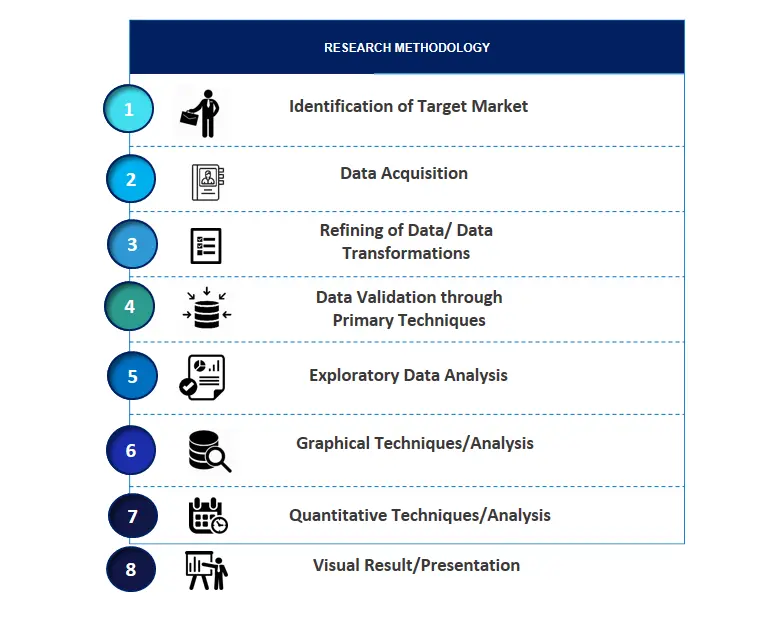
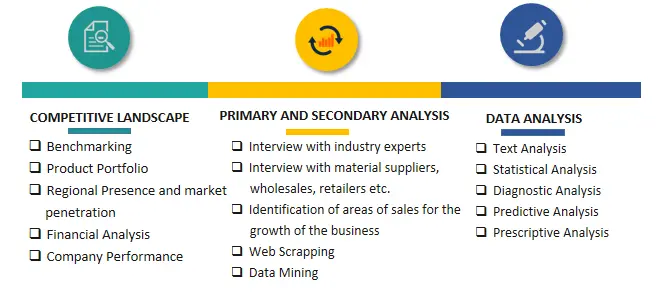

Frequently Asked Questions About This Report
PLACE AN ORDER
Year End Discount
Sample Report
Pre-Purchase Inquiry
NEED CUSTOMIZATION?
Request CustomizationCALL OR EMAIL US
100% Secure Payment






Related Reports
Our Global Clients
Our data-driven insights have influenced the strategy of 200+ reputed companies across the globe.
